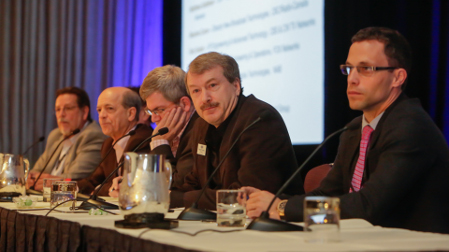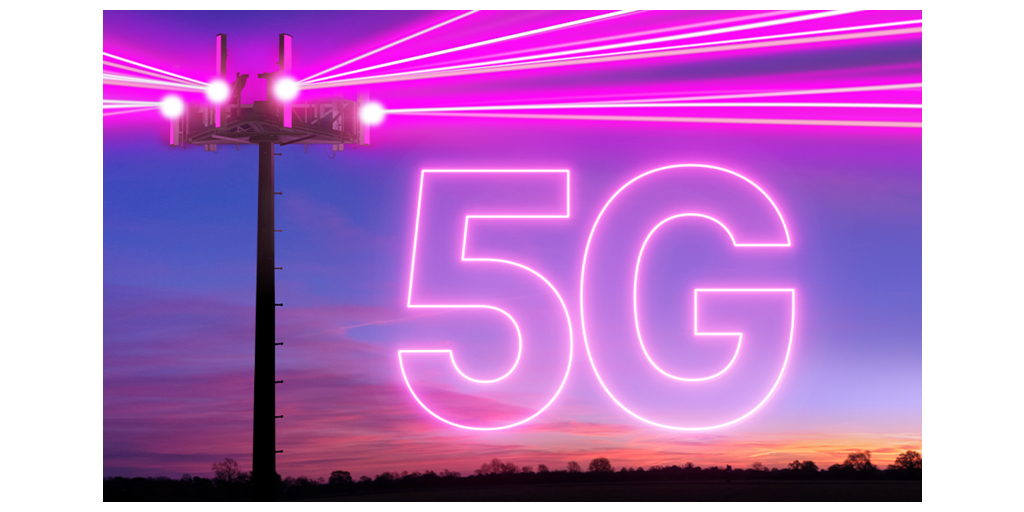Why Broadcasters Should Attend the HPA Tech Retreat
I always look forward to attending the HPA Technology Retreat (Feb. 15-19 at the Hyatt Regency in Indian Wells, Calif.). One of the best things about the event is the eclectic nature of the topics covered, which could vary from the most esoteric technical element of a connector to the business case of delivering a new service; and anything in between, in the nature of content creation, post production or broadcasting. The talent attracted to present tutorials or participate on a panel is matched by the talent in the audience, which at times generates very lively debates because audience participation is encouraged.

The broadcasters panel is one of the most popular sessions of the five-day event.
Which brings me to the Broadcaster’s Panel, one of the highlights of the Tech Retreat that garners extensive audience involvement. For the past nine years, I have had the honor of moderating the panel, an hour-long, free-flowing discussion about anything related to broadcasting. Panelists include senior executives from both traditional and new media broadcasting. I will ask some questions, but I mostly will engage the audience to ask questions and debate with the panelists, who of course, will often debate with each other (and me!). This year I will attempt to institute a new “policy”: I will interrupt a panelist if I believe they pontificate for too long; I will borrow the famous “Schubin clown horn” (aka the timekeeper) for this purpose. We are all known for our loquaciousness, but I wish to keep responses pithy to keep the session flowing.
HIGH INTEREST IN HIGH DYNAMIC RANGE
new hot topic this year will be high dynamic range. The interest in understanding this topic is so high that the Tech Retreat has devoted a special half-day “HDR Power Session” that will include a tutorial on what HDR is and discussions about production workflows and consumer displays.
All very interesting stuff, of course, but what about special issues and concerns related to broadcasting live content in HDR in real-time? This will be covered in the Broadcasters Panel. Bringing the live, real-time element into the equation has always been a major challenge to broadcasters; there is no time for a “do over;” what’s done is done. In addition, with broadcasters’ interest in supporting backwards compatibility to existing contemporary “standard dynamic range” (SDR) TVs and set-top boxes— without having to simulcast both formats due to bandwidth constraint—there is even more of a challenge to support both existing SDR and new HDR devices if either dual layers or single layer plus metadata is required.
And speaking about bandwidth constraints, even in the compressed domain, the transmission/delivery of Ultra HD signals to the consumer is significantly higher than that for HD. Even with the bandwidth savings of the new ATSC 3.0 draft standards (still a work-in-progress, but potentially ready for 2017 broadcasts), providing new services and supporting 4K Ultra HD (2160p) resolution will be a challenge. What are broadcasters’ views for delivering 4K UHD services? With spectrum being a premium, will there be enough bandwidth to add new services (for fixed and mobile devices), support legacy HDTV and new 4K UHDTV services?
While new TVs that support HDR are all 4K resolution, a significant amount of bandwidth may be saved by transmitting in “enhanced HD” (1080p60 + HDR) and having the display up-convert to 4K (2160p) resolution. With the visual “punch” of HDR—which, because of its modest increase in bitrate over SDR, many consider the “best bang for the bit” —will most consumers really notice the difference between up-converted 1080p HDR and native 2160p HDR? Will there be a marketing impact to the service provider? This should turn out to be a very spirited discussion!
The professional video industry's #1 source for news, trends and product and tech information. Sign up below.
I am sure we’ll also touch upon the state of migrating to an all-IP infrastructure: what’s the state of conversion? If we’re already migrating, what’s working and what’s not, and what are some of the major issues? Spectrum issues—including the upcoming FCC Incentive auction—are usually a big topic as well, although we may be a bit stifled to discuss that topic this year as we are currently in what the FCC calls the “quiet period” for the reverse auction and they have published prohibited communications rules that impact broadcasters, whether or not they are participating in the auction.
Hope to see you at the Retreat.
For more information on the HPA Tech Retreat, visit www.hpaonline.com.
Matthew Goldman is senior vice president of technology, TV and Media Strategy, for Ericsson.

